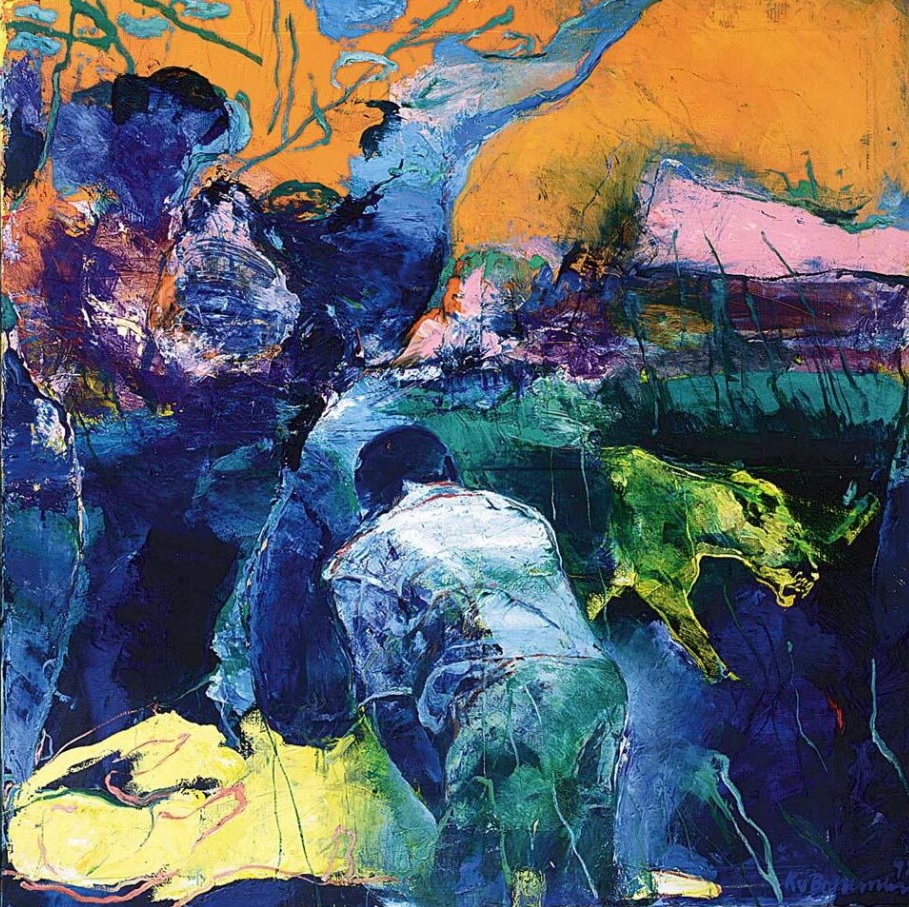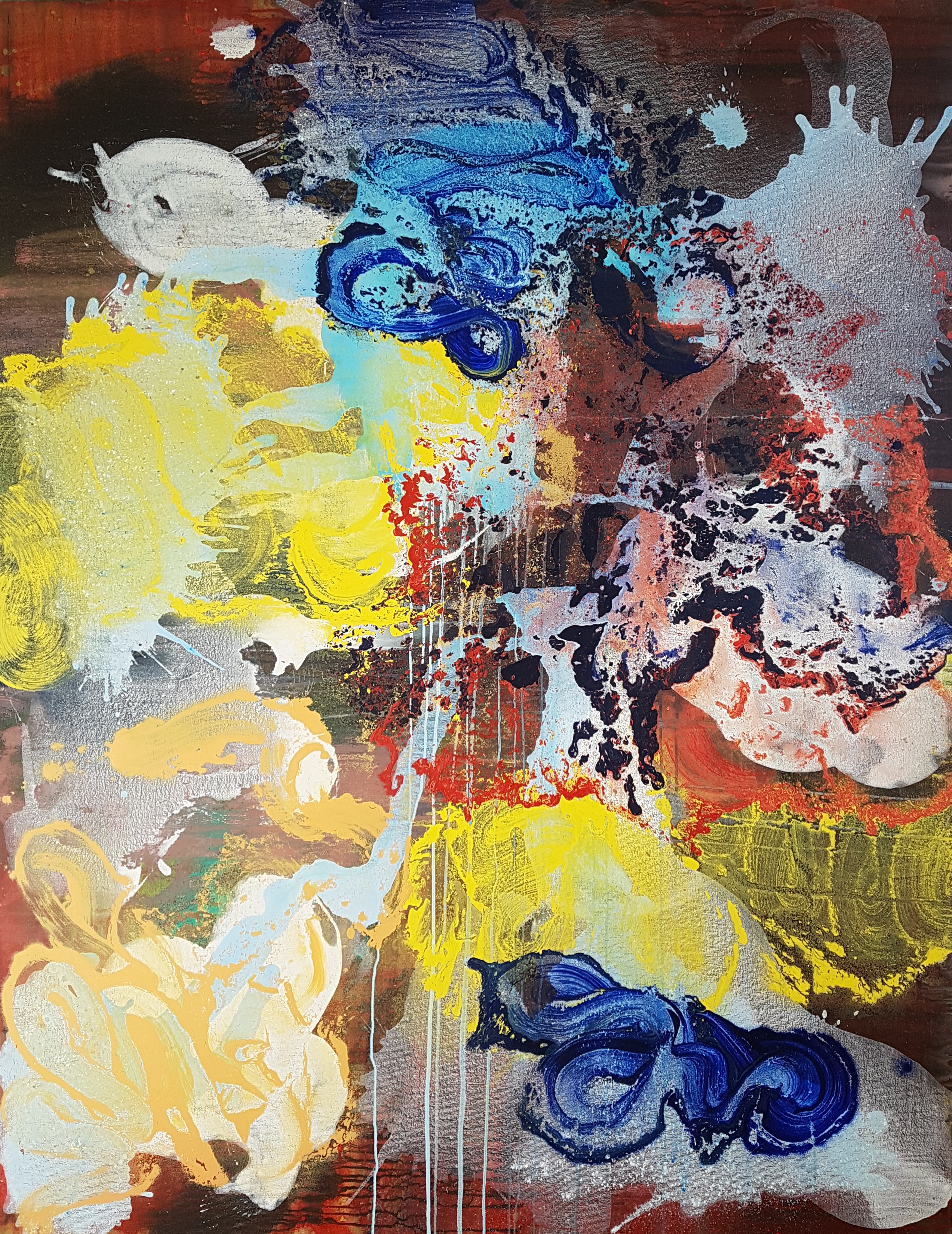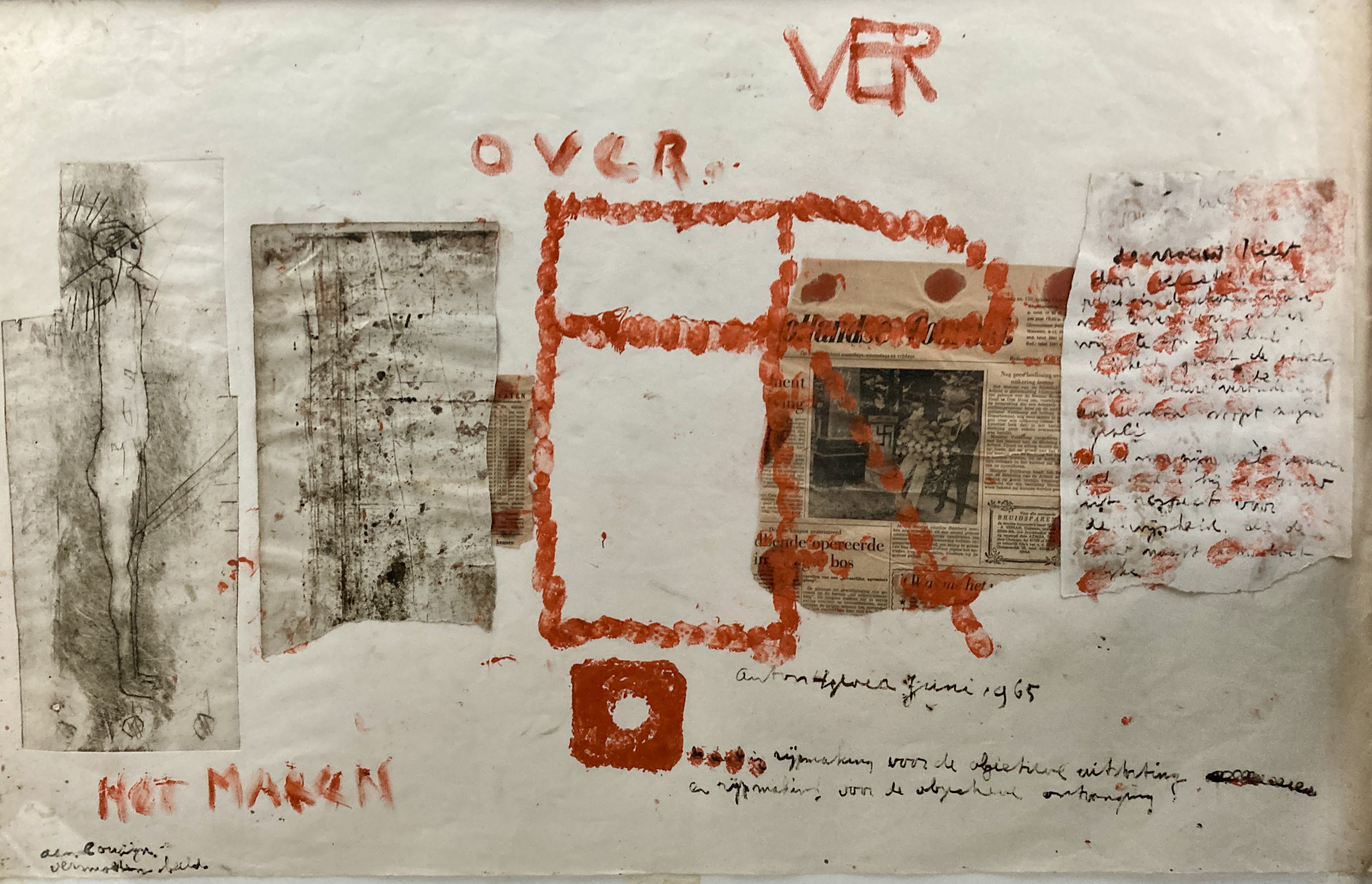
Beschrijving
Signed and dated lower right KvBohemen72; signed and dated '72 on the stretcher. Provenance: Galerie Delta Rotterdam. Publications: Hans Redeker, Kees van Bohemen, Van Spijk BV, Venlo, 1977. Huidige eigenaar kocht het in 2003 bij Sotheby's in Amsterdam
(Het schilderij wordt collegiaal verkocht met Galerie Mia Joosten, Amsterdam).
Over Kees van Bohemen.
The Dutch artist Kees van Bohemen is considered among the most complete painters of the Netherlands. His fame spread out beyond the Dutch boundaries. He was born in 1928 in The Hague. After his training at the Koninklijke Academie voor Beeldende Kunsten, when he was 14 years old, he received funds for a nine-months' scholarship in Paris. He stayed there for Ƥve years. His early works may be recognised by the lack of any Ƥgurative element. They are built up from large contrasting white and black surfaces.
Towards the end of the period, the artist became a member of De Informelen, but decided to develop his own style soon thereafter: colours became very important and he gained recognition by starting to combine the Ƥgurative and abstract in his work, as becomes visible in this painting. In the 1950s Van Bohemen caused sensation with his sporting paintings, depicting subjects such as boxing, horse racing, cycling and car racing. These pictures often are of large size and are painted with a virtuoso and thick impasto. His travels to Africa and America produced exotic paintings in which colour and form remained the most proliƤc elements whereas the subjects became less important. 'I don't want to work along the lines of anecdotes, I don't want to be just a painting narrator', Van Bohemen once said. His journey to Kenya with friends in 1972-1973 yielded impulses for works in which the animal and
at the same time the primeval power of the tropical vegetation add a new dimension to his world, in spite of his animal paintings from the past. In the colours and in the degree of abstraction a fusion can be seen of what used to be manifested by Van Bohemen alternatively and separately in earlier periods. Kees van Bohemen does not allow himself to be pinned down, does not listen to anything but what his daily confrontation with the problem of painting reveals to him. Therefore Frans Duitser could write at an exhibition in the leading Hague gallery nouvelles images in 1976: 'The diơerences in degree and the diơerent shades may strike people who have been watching him, in essence Van Bohemen remains himself, a pure artist in the exact meaning of the term, a strong colourist, who digests impulses like a lonely adventure and at the same time remains within the climate of an originally European art and lets incidents be incidents. For himself Van Bohemen is always on time'.
In 1985 the artist died in a hospital in his native town. His oeuvre can be seen in the Boijmans van Beuningen Museum, Rotterdam, the Haags Gemeentemuseum, The Hague and the Stedelijk Museum, Amsterdam.
Details
- Databanknummer:
- 84563
- Lotnummer:
- -
- Advertentietype
- Archief
- Instelling:
- Kunstmakelaardij Metzemaekers
- Veilingdatum:
- -
- Veilingnummer:
- -
- Stad
- -
- Limietprijs
- -
- Aankoopprijs
- -
- Verkoopprijs
- -
- Hamerprijs
- -
- Status
- Verkocht
Technische details
- Kunstvorm:
- Schilder- en Tekenkunst
- Technieken:
- Olieverf
- Dragers:
- Doek
- Lengte:
- 150 cm
- Breedte:
- 150 cm
- Hoogte:
- -
- Oplage:
- -
Beschrijving
Signed and dated lower right KvBohemen72; signed and dated '72 on the stretcher. Provenance: Galerie Delta Rotterdam. Publications: Hans Redeker, Kees van Bohemen, Van Spijk BV, Venlo, 1977. Huidige eigenaar kocht het in 2003 bij Sotheby's in Amsterdam
(Het schilderij wordt collegiaal verkocht met Galerie Mia Joosten, Amsterdam).
Over Kees van Bohemen.
The Dutch artist Kees van Bohemen is considered among the most complete painters of the Netherlands. His fame spread out beyond the Dutch boundaries. He was born in 1928 in The Hague. After his training at the Koninklijke Academie voor Beeldende Kunsten, when he was 14 years old, he received funds for a nine-months' scholarship in Paris. He stayed there for Ƥve years. His early works may be recognised by the lack of any Ƥgurative element. They are built up from large contrasting white and black surfaces.
Towards the end of the period, the artist became a member of De Informelen, but decided to develop his own style soon thereafter: colours became very important and he gained recognition by starting to combine the Ƥgurative and abstract in his work, as becomes visible in this painting. In the 1950s Van Bohemen caused sensation with his sporting paintings, depicting subjects such as boxing, horse racing, cycling and car racing. These pictures often are of large size and are painted with a virtuoso and thick impasto. His travels to Africa and America produced exotic paintings in which colour and form remained the most proliƤc elements whereas the subjects became less important. 'I don't want to work along the lines of anecdotes, I don't want to be just a painting narrator', Van Bohemen once said. His journey to Kenya with friends in 1972-1973 yielded impulses for works in which the animal and
at the same time the primeval power of the tropical vegetation add a new dimension to his world, in spite of his animal paintings from the past. In the colours and in the degree of abstraction a fusion can be seen of what used to be manifested by Van Bohemen alternatively and separately in earlier periods. Kees van Bohemen does not allow himself to be pinned down, does not listen to anything but what his daily confrontation with the problem of painting reveals to him. Therefore Frans Duitser could write at an exhibition in the leading Hague gallery nouvelles images in 1976: 'The diơerences in degree and the diơerent shades may strike people who have been watching him, in essence Van Bohemen remains himself, a pure artist in the exact meaning of the term, a strong colourist, who digests impulses like a lonely adventure and at the same time remains within the climate of an originally European art and lets incidents be incidents. For himself Van Bohemen is always on time'.
In 1985 the artist died in a hospital in his native town. His oeuvre can be seen in the Boijmans van Beuningen Museum, Rotterdam, the Haags Gemeentemuseum, The Hague and the Stedelijk Museum, Amsterdam.
Geen prijsinformatie? Sluit een abonnement af.

.jpg)

.jpg)